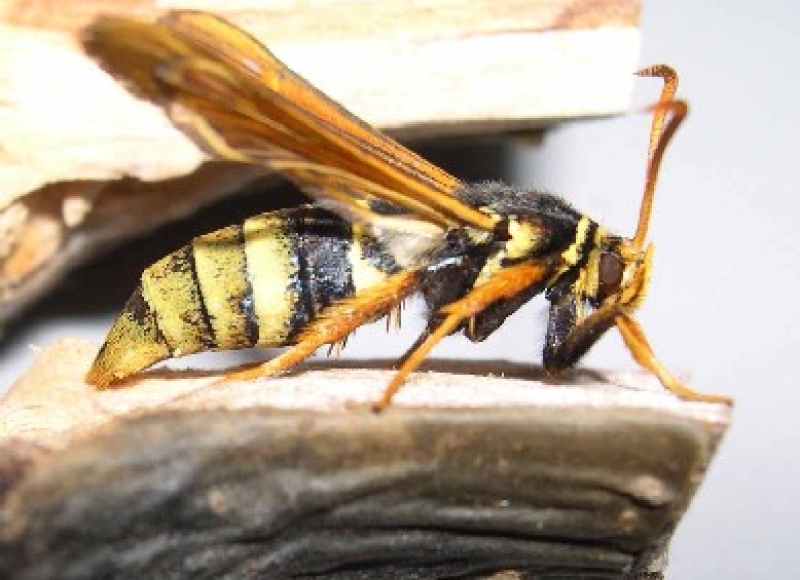Parathene robiniae, the western poplar clearwing can be found on occasion attacking willows, aspens and poplars in nursery systems. The clearwing moths emerge from host plants in summer. The wasplike moths fly to trees where they lay eggs singly in bark crevices often near wounds. The larvae that hatch from these eggs move to a feeding site and begin to eat their way into the phloem and cambium and later form galleries in the wood. In the PNW it takes two seasons for the larvae to reach maturity and exit from the trees.
Damage is generally found in trunks and larger branches. Newly planted seedlings are often girdled. Sap oozes from wounds and granular frass can be seen.
Bentley et al. has useful info on chemical protection trials they did way back. More recent work is in the Brown et al. article and that refers to mating disruption program. There is much more on this topic in the dissertation by Kittleson. There has been use of entomopathogenic nematodes, S. feltiae, with a high success rate (88-90%).
Useful Resources
Bentley, W.J., J.F. Karlik and W. Afflect. 1989. Annual Sprays May Control Western Poplar Clearwing. California Agriculture. Vol. 48, no.4
Brown, J.J., N.T. Kittleson, E.R. Hannon, D.B. Walsh. 2006. An Endemic Population of Western Clearwing Moths (Lepidoptera: Sesiidae) Invades a Monoculture of Hybrid Poplars. Forest Entomology 99(3): 771-779.
Kittleson, N.T. 2006. Biology and Control of the Western Poplar Clearwing Moth, Paranthrene robiniae (Hy. Edwards), In Hybrid Polars. Dissertation. Dec. 2006.
Forest Pests of North America: Western poplar clearwing
Clearwing Moth Management Guidelines from UC IPM Online has good information for a variety of clearwing moths including a list of pheromone suppliers.
Another local pheromone supplier not included in the list above is Advanced Pheromone Technologies. This is a link to their technical guide for trapping sequoia pitch moth.
Original publication: 6/5/2009
Last update: 6/17/2016
Author: R.L. Rosetta, Extension Nursery Integrated Pest Management, Department of Horticulture, Oregon State University


